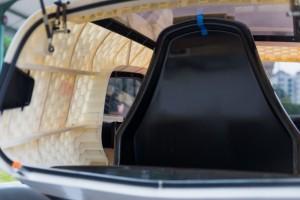
However, while it may seem like a good idea to keep geometrical spaces free of so much material, hollowing can sometimes lead to such issues as loss of functionality and reduced strength for your 3D printed parts. This is why research continues into these hollow internal structures – to overcome these challenges.
Honeycomb structures are generally the most efficient 3D printing infill, and a novel form of this kind of structure, the honeytube, is the focus of a new research paper, titled “Compressive properties of hollow lattice truss reinforced honeycombs (Honeytubes) by additive manufacturing: Patterning and tube alignment effects,” recently published in the Materials & Design journal.
Honeytubes are simply honeycomb structures that have been reinforced by lattice trusses, but they have far greater energy absorption than just your average honeycomb. The researchers designed four types of these honeytubes (take my advice and do not Google this term without adding the words ‘3D printing’ after it) and 3D printed them with SLS technology in order to demonstrate their compressive properties.The abstract reads, “Honeytubes, a novel type of honeycomb formed by reinforcement with lattice trusses, were reported to exhibit enhanced buckling resistance. However, an in-depth analysis for the compressive performance and energy absorption capacity was lacking. In this paper, the effects of microstructure and tube alignment on compressive properties were studied. Four types of honeytubes were designed based on different topologies, geometries and tube patterns, and fabricated by selective laser sintering (SLS). Out-of-plane compression tests and finite element simulation were performed for the analysis. Results indicated that incorporation of lattice in honeycombs resulted in greater local strain in tubes and tube-rib connections. However, honeytubes exhibited superior energy absorption capability, even surpassing that of some metallic lattices. Balancing the configuration of tubes in honeytubes could ensure enhanced mechanical performance. This work demonstrates that materials designed by capitalizing on micro-topologies can regulate mechanical properties and provide insights for guiding the development of new materials.”
Their research shows that if they capitalize on micro-topologies, this compressiveness can be manipulated for balance. Then, by creating balanced tube patterns, one can ensure that one’s honeytubes will reach their full potential of increased compressive performance. The results of this work have definite applications in the automotive sector.
Co-authors of the paper are Jun Xu, Yaobu Wu, Lubing Wang, and Jiani Li with Beihang University, Yuwei Yang and Yuli Tian with Beijing Electric Vehicle Co., Ltd (BJEV), Zizheng Gong and Pinliang Zhang from the Beijing Institute of Spacecraft Environment Engineering, Steven Nutt with the Department of Chemical Engineering and Materials Science at UCLA, and Sha Yin, with both Beihang University and Xi’an Jiaotong University.
Discuss honeytubes and other 3D printing structures and topics at 3DPrintBoard.com or share your thoughts in the Facebook comments below.